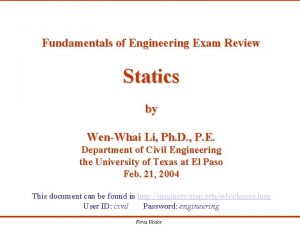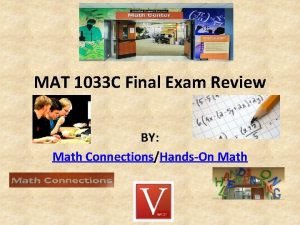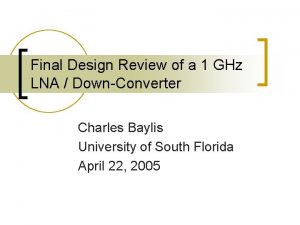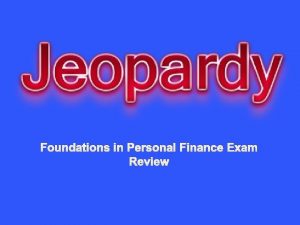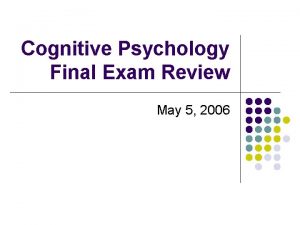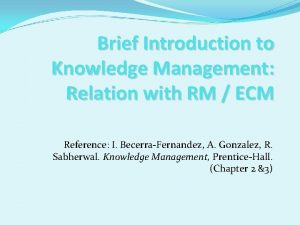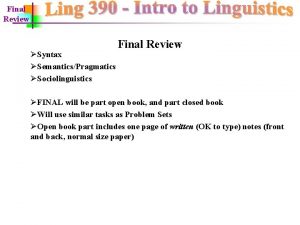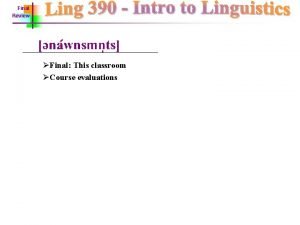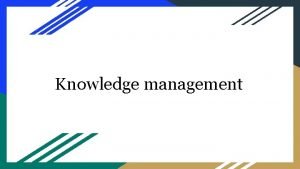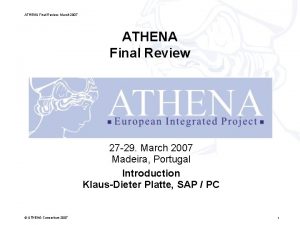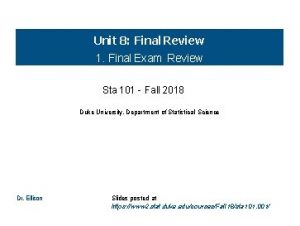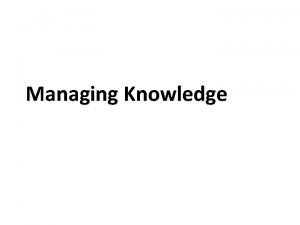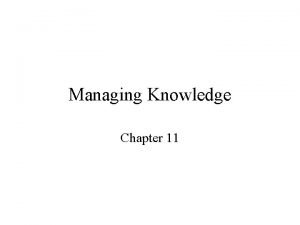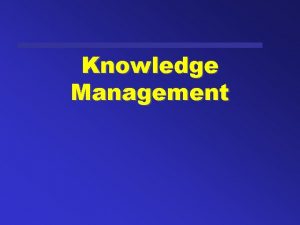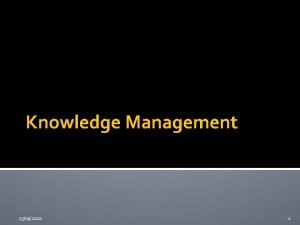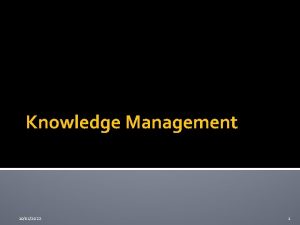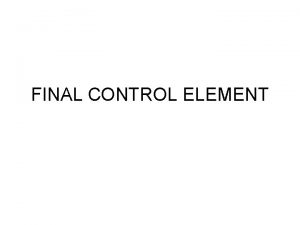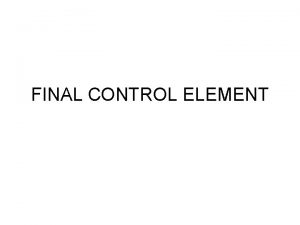Knowledge management Final review Knowledge management process 2




































- Slides: 36

Knowledge management Final review

Knowledge management process 2

Explicit vs. implicit

Knowledge Management Huma n capital Social capital Today’s intellectual capital Knowledge Management Huma n capital Social capital Structural capital Organizational learning Future intellectual capital Structural capital Fig. Intellectual capital grows with use


Task Organization & coordination KM practices

Two Major Archetypes to organization • Mechanistic • Specialized jobs (clear boundary) • Lot of rules, policies, and procedures • Simple coordination mechanisms • Centralized authority • Standardization • Status-conscious formal organizations • Organic • Joint specialization (boundary crossing) • Communication, experience, judgment as control • Complex coordination mechanisms • Decentralized authority • Less standardization • Expertise-conscious informal organization 7

Organizational forms according to TASK characteristics Complex task Decentralized Bureaucratic (standardization of skills) Decentralized Organic (mutual adjustment) Dynamic: Stable environment Centralized Bureaucratic/mechanic al (standardization of work processes) simple Centralized Organic (direct supervision) High degree of Unpredictable Change 8


Coordination and complexity Informal coalitions 10

Six rules to cope with unnecessarily complexity (1) improve understanding of what coworkers do and what they face (2) determine which people are the firm’s natural integrators and strengthen their roles (3) expand the amount of power available to everyone (4) increase the need for reciprocity in the system (5) make employees feel the “shadow of the future" (6) hold uncooperative people accountable.

Motivating knowledge workers • Against money as a motivator of complex problem solving. • Money works as a motivator for simple mechanical (non-cognitive) problems. Creative problems that require brain power and doing something that has not been done before demands for commitment. Superior motivators • Superior motivators • Autonomy • Drive to master the skill • Meaningful purpose � 12

13

Groupthink • The act or practice of reasoning or decision-making by a group, especially when characterized by uncritical acceptance or conformity to prevailing points of view 14

Us vs. them mentality How politics can break our brain Atlantics article 15

Hot spots • Hot spots = (Cooperative Mindset x Boundary Spanning x Igniting Purpose) x Productive Capacity Gratton, L. (2010). Hot Spots: Why Some Teams, Workplaces, and Organization Buzz with Energy-And Others Dont's 16

Boundary spanner



Advantages of team decision-making • Increased pool of knowledge to draw upon • Increased acceptance and commitment of the selected decision • Wider range of perspectives taken into consideration • Novice team members can learn from more experienced team members (internalization) • Greater understanding of the rationale of the selected decision 20

Disadvantages • Common knowledge effect • Conformity can stifle creativity • Groupthink can override individual judgment • Group polarization can lead to overly risky decision • Diffusion of responsibility leads individuals to avoid feeling responsible • Satisficing so that the decision is acceptable rather than optimum 21

Collective intelligence: what make a group smart? Test your social intelligence 22

The five keys to a successful Google team 23

Wisdom of the crowds? • Diversity of opinions and backgrounds • Decentralization/Independence • Private information/implicit knowledge and autonomous decision making • Proper mechanism to aggregate the inputs • The weather forecaster puzzle (knowledge in the social world, integration mechanism) • Platform and forum • Group decision mechanisms 24

Failures of crowd intelligence • Homogeneity • Centralization • Top-down • Division • Failing to share information • Compare SARS and 911 • Imitation • Emotionality 25

Three facets of social capital • Structural • Coherence, density, connectivity. . • Relational/emotional • Personal relationships, group identity • Cognitive • Shared representations, interpretations, systems of meaning

Conditions for knowledge sharing Huysman, M. (2004). Design requirements for knowledge-sharing tools: a need for social capital analysis

Granovetter’s theory of weak tie • Strong ties are embedded in high homophilous clusters • Weak ties connect to diversity • Weak ties a source of novel information Adopted from Borgatti, 2004

Closure vs. Structural Holes James Coleman: High trust in a community with full closure networks (“strong component”) and strong ties fosters mutual assistance obligations and the social control of deviant behaviors (e. g. , disciplining children who misbehave in public) Bonding social capital Ronald Burt: Ego gains numerous competitive advantages and higher investment returns if ego’s weak, direct-tie relations span structural holes, thus serving as bridge between its alters Bridging social capital


Brokerage

Network “redundancy”

Echoing Coleman, Burt argues that social closure provides a key resource for building trust and amplifying reputation © 2004 Ronald Burt. Brokerage and Closure, Cambridge University Press 2005.

What's the purpose? To develop members' capabilities; to build and exchange knowledge To deliver a product or service Who belongs? What holds it How long does together? it last? Community of Members who Passion, As long as practice select commitment, there is an themselves and interest in identification maintaining with the group's the group expertise Formal work Everyone who Job Until the next group reports to the requirements reorganization group's manager and common goals Project team To accomplish a Employees The project's Until the project task assigned by milestones and has been senior goals completed management Informal network To collect and Friends and Mutual needs As long as pass on business people have a information acquaintances reason to connect

Knowledge audit, definition • “Systematic investigation, examination, verification, measurement and evaluation of explicit and tacit knowledge resources and assets, in order to determine how efficiently and effectively they are used and leveraged by the organisation” Ann Hylton

 Ap gov final review
Ap gov final review World history spring final exam review answers
World history spring final exam review answers World geography spring final review
World geography spring final review Spanish 1 final exam review packet answer key
Spanish 1 final exam review packet answer key Pltw human body systems final exam
Pltw human body systems final exam Poe practice test - materials answer key
Poe practice test - materials answer key Ied final exam
Ied final exam World history semester 2 final review packet
World history semester 2 final review packet World history semester exam
World history semester exam Entrepreneurship 1 final exam review
Entrepreneurship 1 final exam review Spanish 2 review packet
Spanish 2 review packet Environmental science a final exam
Environmental science a final exam Ap world history final exam
Ap world history final exam Us history final exam semester 2
Us history final exam semester 2 Algebra 1 semester 2 final review
Algebra 1 semester 2 final review Geometry final review
Geometry final review English 2 semester exam
English 2 semester exam Physics 20 final exam practice
Physics 20 final exam practice Hft 2401 exam 1
Hft 2401 exam 1 Fe exam statics review
Fe exam statics review Uses the witch tales to carry out personal vengeance
Uses the witch tales to carry out personal vengeance Noah carried a skateboard
Noah carried a skateboard Mat1033 final exam
Mat1033 final exam Zoology final exam review
Zoology final exam review Lna
Lna Chemistry fall semester exam review answers
Chemistry fall semester exam review answers Earth science sol review
Earth science sol review Apes semester 1 final review
Apes semester 1 final review Us history semester 1 final exam study guide answers
Us history semester 1 final exam study guide answers Spanish 2 review
Spanish 2 review Personal finance final exam review
Personal finance final exam review Antigone final test review
Antigone final test review Psychology final exam review
Psychology final exam review Project management process group and knowledge area mapping
Project management process group and knowledge area mapping Knowledge management process
Knowledge management process Knapps model
Knapps model Difference between advertising and sales promotion
Difference between advertising and sales promotion



















